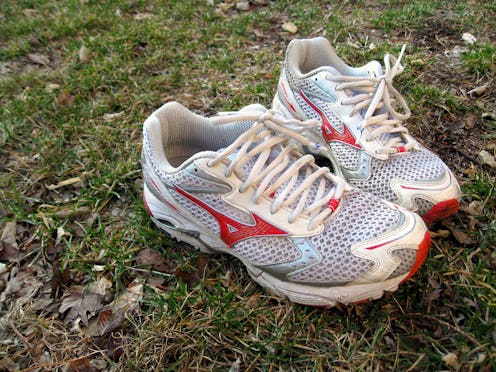
When you live in a city like New York, it’s a lot easier to get your recommended amount of exercise than you think: Even if you don’t go to the gym, do yoga, or have a personal trainer, you walk. A lot. Everywhere. And one thing that I failed to account for before I moved from the city to the suburbs last summer was exactly how much walking I did before… and how much walking I am not doing now. The result? I’m still fine weight-wise, but good gravy, am I out of shape. I’m working on it — now that it’s warmer out, I’m going to start biking regularly again — but yikes!
Apparently I’m not alone here, either. Alexis C. Madrigal recently wrote over at The Atlantic about his continuing struggle to make sure he’s moving around enough. Like many us, he says, “I have a tendency to spend all day in front of a computer, then pop outside for a quick run and consider my cardiovascular-health job to be done.” But when the American Heart Association tells us that “the simplest, positive change you can make to effectively improve your heart health is to start walking,” how do you figure out what your baseline walking requirement is? How do you keep track of it? Sure, you could keep written records; you could also get an activity tracker. But why would you do that when you have exactly what you need already sitting in your pocket?
This cat is definitely getting in enough walking.
Anyhoo, Madrigal took advantage of his iPhone 5S’s M7 co-processor by installing the Runkeeper app. A popular fitness app available for both iPhone and Android, Runkeeper has a “Pocket Track” feature that can collect data from the M7’s accelerometer and organize it for you—in short, telling you how long you’ve spent walking, how long you’ve walked, and letting you know your pace, organized on a handy calendar. Neat, right?
As Madrigal notes, tracking apps like Runkeeper “won’t solve America’s cardiovascular crisis alone… but they’re a start.” And Runkeeper isn’t the only app that’s made for walking out there; these other six apps are worth giving a shot, too. Are you walking enough?
1. Moves
Unlike Runkeeper, Moves isn’t free—it’s $2.99 in the iPhone App Store—but Kit Eaton of the New York Times called it “my favorite because of its minimal design,” so if simple is your bag, it might be worth it. It features a colorful circle that tracks how many steps you take daily; the bigger the circle, the more you walked. Easy-peasy!
2. Map My Walk
This free app for iPhone and Android tracks your location by GPS (hence the whole “map” thing), wirelessly syncs with heart rate monitors, and can even talk to you about your progress as you walk. Its interface is a little more complicated than Moves and Runkeeper, but it’ll definitely get the job done and then some.
3. Fitbit
Fitbit has been having its moment in the sun lately, so perhaps it’s no surprise that the activity tracker also has a smartphone app. True, the free iPhone and Android app is geared towards convincing you to buy the actual device; that aside, though, it does a pretty good job tracking your number of steps per day, the miles you’ve walked, and the calories you’ve burned through the M7 processor. You can also use it to track what you’ve eaten and how many calories you’ve consumed.
4. Pedometer++ and Accupedo Pedometer
Just want a simple pedometer? Pedometer++ for the iPhone and the similar Accupedo Pedometer for the Android are the way to go. Pedometer++ is even more basic than moves, tracking a simple tally of steps against your daily target number of steps. Accupedo Pedometer does much the same thing, as well as featuring a widget that lets you stick your walking data to your phone’s home screen.
5. Runtastic Pedometer
Runtastic Pedometer, available for both iPhone and Android devices, works a lot like Map My Walk, minus the mapping capabilities. You can also tag each day’s data with a note about how you felt or what the weather was like.
6. Endomondo Pro
At $4.99, this iPhone and Android app is the most expensive on the list; it did, however, win iMore’s title for the best running and walking app for iPhone in 2013, so you know it means business. It has massive amounts of functionality with tons of different workouts and activities, but with a nice, simple interface that makes it super easy to use. It can even create and find routes for you, and there’s the option to share and engage in the Endomondo Pro community if you like to talk with others about how your workouts are going. Fun!
Image: queen_of_subtle/Flickr